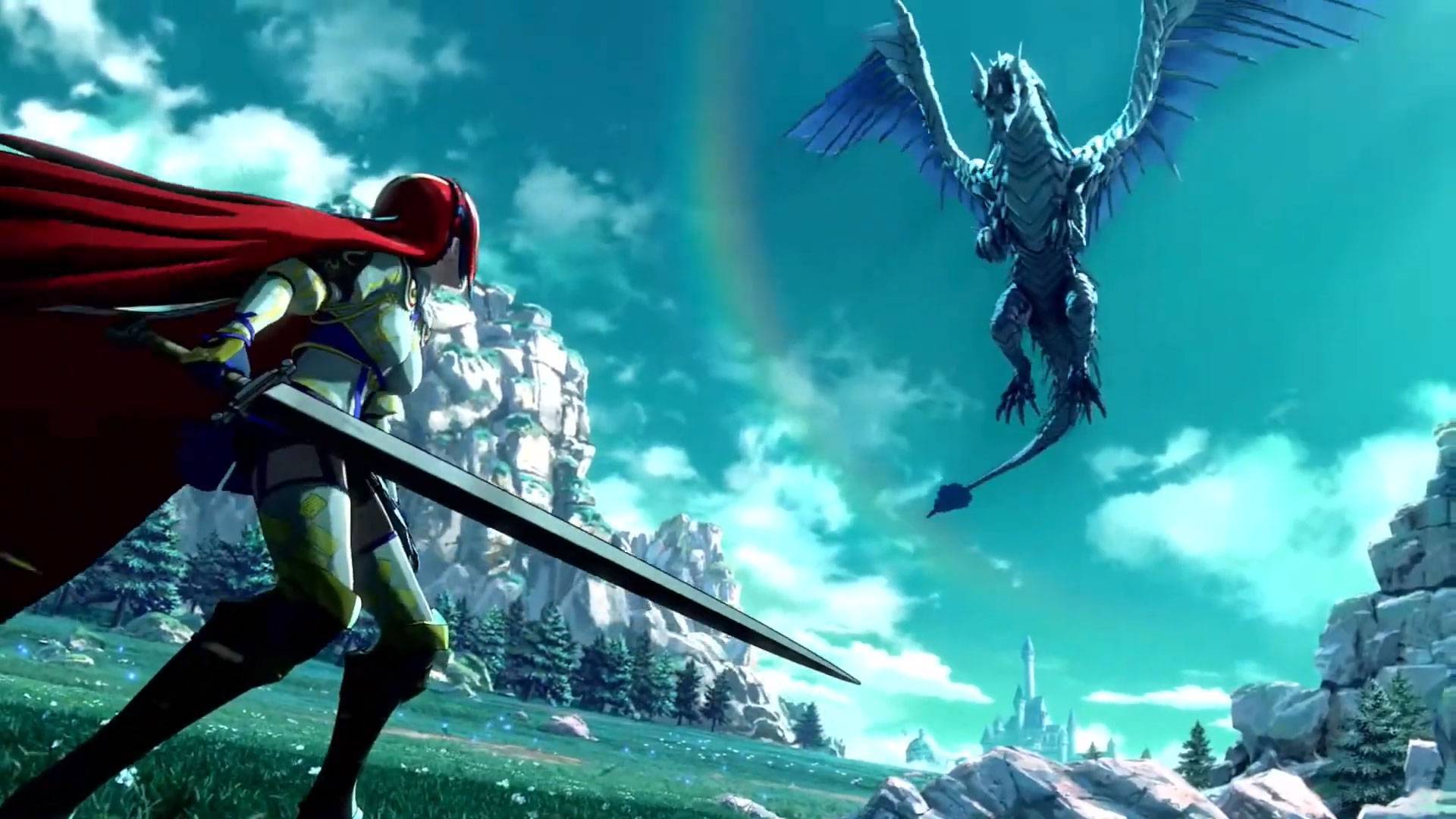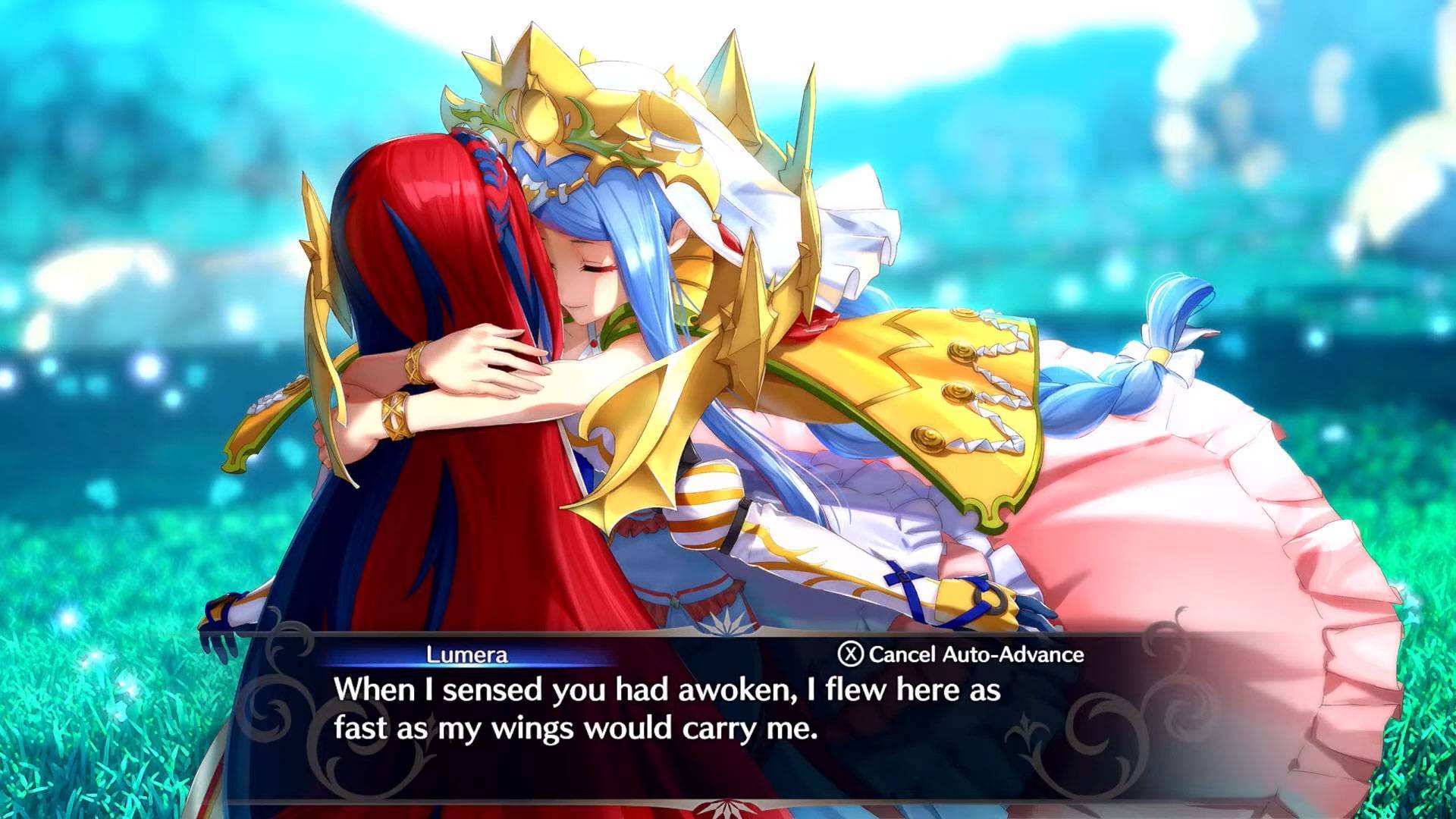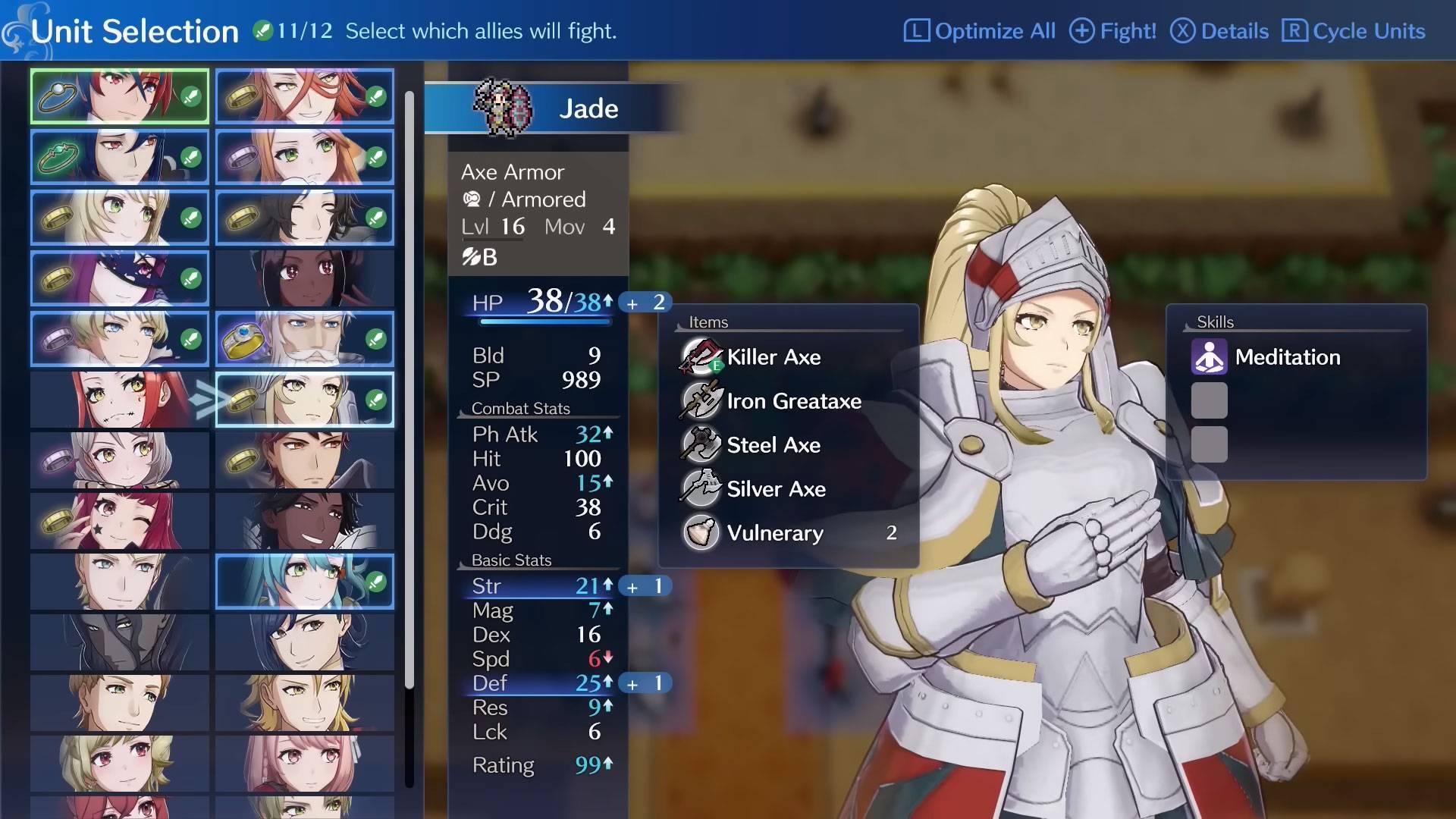Fire Emblem Engage Review
Nintendo Switch
Fire Emblem Engage has one of the best TRPG mechanisms and tactical combat that have been released in recent years.
Reviewed by SnowWhite on Jan 21, 2023
The Fire Emblem series has a rich and intriguing history. There have been both highs and lows for this series by Intelligent Systems. Fire Emblem: Three Houses, released in 2019, has been the selling spinoff of the series' classic TRPG games to date, and Intelligent Systems leads the charge once again on Nintendo Switch. To win over the series' die-hard fanbase, they have gone retro this time around.

For this reason, Engage reintroduces a heavy emphasis on battles and reintroduces numerous previously absent characters. The Nintendo-published game aggressively undermines many qualities that set apart Three Houses.
Fire Emblem Engage takes what it learned from Three Houses and blends it with the series' established formula while adding some fresh twists. Sadly, a few unwanted flaws severely hampered what should have been an excellent game.
When compared from the designs to delivery, Fire Emblem Engage seems more of a progression, refining several components that have been around for decades. But truth be told, after Three Houses, the narrative quality of this game suffers significantly.
The story as a whole and its structure, based on major chapters, optional pieces, and practice battles, make you lose the desire to discover more and delve further into the story, at least until you've had a chance to equip further and empower your favorite characters.
On top of a rather easy-to-guess story, the game's character development mostly fails to be engaging. Intelligent Systems' effort to lead us forward in evolution with our protagonist, who has lost all memory and is attempting to re-create her position in a world that has changed drastically over the previous century. Fans may be disappointed with such a weak plot and the corresponding cliches, yet the game remains credible even when it falters.
In Fire Emblem Engage, you play the Divine Dragon Alear, a creature that had been asleep for more than a thousand years prior to the beginning of the game.

Meanwhile, the fabled Fallen Dragon, which has been imprisoned during this process, begins to revive, posing a danger to the planet of Elyos. Alear will go on a journey across the world in order to acquire the Rings of Emblems, as her mother has advised him to do so.
Despite having no memory of your history, you learn that you are destined to acquire the 12 Emblem Rings and use them to call forth legendary heroes, on whose shoulders you will bear the burden of defeating the Fell Dragon Sombron and restoring peace to the continent of Elyos.
These emblems give Alear the ability to call upon legendary warriors from previous Fire Emblem games to join him in battle. Wrong people getting their hands on them might mean doom for our protagonist and the world.
You'll immediately be thrust into conflict in the first minutes of Fire Emblem Engage. The series' trademark weapon triangle, in which certain weapons have the edge over others, is back, but this time with a new twist.
Some boss fights may need you to practically force your opponent into submission by attacking them while you have the upper hand. The problem is that your opponents can use this ability against you.
It can make certain battles seem pointless, but it encourages strategic play. A similar statement could be made about the Engage platform. With an Emblem Ring, each warrior in your squad can form an instant bond with a protagonist from a previous installment in the series.

In exchange for this, you can access a few useful skills, including the ability to Engage. Picking your time to Engage is crucial since most of these attacks are certain to kill any foe you use them on.
The essence of Fire Emblem's tactical gameplay hasn't evolved much in the last three decades, and that won't start changing now. This is a positive thing since the gameplay of Fire Emblem Engage can be picked up and played by both longtime players and newcomers with little to no preparation. The option to select between the more difficult Classic mode, in which your units are destroyed completely upon dying.
The more forgiving Casual mode, in which your units are just withdrawn until the next encounter, is one of the options that has been brought back. In addition, if you sense that the fight is not going in your direction, you can go back one turn and try again, and there is no obligation for you to use it. This may be controversial in certain quarters, but it seems like a no-brainer in improving your gameplay satisfaction.
Although the narrative in Fire Emblem Engage is only influential at the beginning of the game, the game's fighting system earns high marks throughout its whole.
Your collection of emblems will continue to grow at regular intervals, giving you access to new conceivable combinations as you do so. When it comes to finding the greatest team, a little bit of effort is required here. Regrettably, the proportions of the various symbols are only partially appropriate.

However, if you have formed a strong alliance, your opponents are in for a battle to the finish if you decide to engage them. Every legendary warrior in the game has a unique ability that can only be deployed once per alliance.
For instance, Celica can teleport for a deadly strike during the fight, while Leif can attack his enemy four times. When it comes to timing, even an enemy with several life bars can be taken down in a single round.
The symbol rings continue to be by far the most significant development in this aspect of combat. As you progress through the narrative, you will discover more and more of them, which you will then be able to distribute among the various members of your squad freely. In contrast to what is presented in the story, each character has a distinct personality when they are engaged in combat.
Whenever you launch an assault, it is almost always met by a response either from your heroes or from those of the opponent. Even if you strike with the right armament, the break will prevent this counterattack from happening, allowing the unit to open to attack for the duration of the round.
In addition, there are a variety of magical grimoires, varying types of units, changed states, and several other aspects that combine to make combat more like a board game than anything else.

Engage shines the brightest in the realm of tactical role-playing game tactics, which is another facet of the Fire Emblem franchise in addition to its focus on characters. Fire Emblem Engage features the best blend of several battles yet seen in the franchise. On average, the difficulty of the various types of combat has increased.
The Emblem Rings, which may be switched between characters and allow them access to a bonded state that combines their powers with those of a hero from Fire Emblem history, are one way that the Engage system helps to alleviate this problem to some extent.
However, combat still demands exceedingly careful preparation, and patience is a virtue for all tactical lines, even the most aggressive ones. The incredible quality of the battle system in Fire Emblem Engage is beyond the limit.
The issue may be traced back to almost everything in its immediate environment. Engage is a significant stride forward for the overall series in terms of its tactical brilliance; nevertheless, the remainder of the game seems to take a few calculated steps backward.
Combat Styles are yet another feature that will make its first presence in Engage. Each unit is not only part of a certain class but also has its own unique Combat Style that improves its performance in combat, which determines how it engages in combat and confers upon it additional benefits. Chain assaults can be generated by support units, for instance, if one of their comrades attacks a target within range.

Despite being attacked by mystic units who ignored whatever terrain superiority they have, armored units are resistant to the break that I mentioned before. This is always the case, even if they are vulnerable to attacks from their opponents.
This specific notion is being added to codify principles that the series has always had, such as that mounted troops have far greater agility or that aerial forces can go over any section of the landscape.
Even while Fire Emblem's old weapon triangle still holds true (Swords > Axes > Lances > Swords), the developer has added a new Break mechanism to the mix. Suppose you successfully assault an adversary with a weapon that has the advantage.
In that case, that opposition will be incapacitated and unable to launch a counterattack until they are involved in another fight. This buys you a precious moment to follow up with an assault from another character, whether you intend to hit the killing blow or not.
Another new gameplay concept has been added to Smash. This takes effect when a character uses a hefty double-handed weapon, usually attacking their target after being hit. The outcome of their assault is a tremendous blow that pushes the foe back one grid space and has a chance to inflict the Break condition on them if they collide with another unit or another obstruction.
I eventually learned to depend heavily on this tactic, opting to do damage from a distance before closing in for the kill. This allowed me to finish off my foes more quickly.

While the enhanced weaponry triangle and equipable Emblem heroes greatly improve the tactical gameplay in Fire Emblem Engage, certain long-standing elements have been deleted in the process.
The lack of significant weapon durability means you may freely use your powerful weapons, while only healing staves have finite uses. In addition, weapon experience has been taken away, meaning your units may no longer advance in weapon rank.
An Axe warrior, the lowest available class, is limited to using axes of up to Rank B quality. They can only utilize higher-tier axes once they upgrade to a more powerful class.
You need to be cautious while upgrading your troops since even the most advanced classes cannot wield rank S weaponry. Bonding a unit with the proper insignia ring over several levels is the only method to increase their weapon competence; however, this is more work than it's worth.
Throughout the game, you will interact with a wide cast of individuals, most of whom will go with you on your journey. Nearly everyone in this story is doing what they're doing for a good reason, whether it's to preserve their nation.
Because they heard the call of the ring, out of a sense of duty, or because they want to go fishing regardless of the outcome. The majority of the characters were enjoyable, although sometimes their fixation on certain topics was distracting.

In fact, a ridiculously large number of troops are included in the game. When playing Three Houses, you make decisions that affect the members you may recruit for your team, and then those individuals immediately become part of your squad. Somnieli, which is the base of operation, starts out without anybody or anything in it, but it hardly takes long for it to become populated by Emblem heroes, other sorts of people, and the belongings they carry.
Somnieli is your primary operational location. Stopping by between missions gives you the option of continuing the campaign or giving the soldiers a much-needed respite without interfering with the flow of battle. It is a floating manor and is destined to grow as the game unfolds, opening the doors to stores and secondary activities.
In this section, you can acquire and improve weaponry by spending money and resources or exchanging dialogues with other characters to solidify their relationships.
In addition, a handful of arcade minigames may be played to earn temporary benefits regarding following bouts and pocket bond pieces. They are a true secondary currency that is awarded as a reward for a huge number of chores and enables you to better everything that revolves around the Emblems. These are vital and should not be ignored.

Fire Emblem Engage's aesthetic changed drastically. Even the engine itself is different from earlier models. The visuals are fantastic; I really like the cutscenes and the assault animations, as well as the fact that our critical hits leave our enemies gasping for air.
The game looks great; other than that, the camera wanders about aimlessly whenever air units are engaged in combat. Okay, maybe twice, but it always seems to happen to me when air units enter a fight along a nearby hill. The issue is unpleasant, but it's not crucial.
All of this takes place against the backdrop of musical tracks that are extremely well taken, create the tone for the conflict, and combine very well with the tale that will develop before our eyes due to the many conversations between Alear, her warriors, and the opposing hordes.
However, on the whole, the streamlining work has been carried out with great attention to detail since the picture quality, overall efficiency, and texture detail all look to be greater than they were in the recent past.
Unfortunately, Fire Emblem Engage does not shine like its predecessor, Three Houses, did. It's still a fine installment in the series, but its release soon after Three Houses presents some challenges because of the very high standards that fans have come to anticipate from the franchise.
It is a pity that it is coupled with a story that is simply bland and iconic heroes who are shadows of who they once were since the game's magnificent visuals are something to see; yet, it is something to behold.

Though Fire Emblem Engage has one of the best TRPG and tactical combat mechanisms that have been released in recent years, and for this reason only, it is well worthy of your attention.
It's a shame that Engage doesn't live up to the high standards set by its predecessor. If you want to battle on hundreds of maps and click through countless dialogues, this is the game for you.
Editor, NoobFeed
Verdict
Fire Emblem Engage has one of the best TRPG mechanisms and tactical combat released in recent years, but it does not shine like its predecessor. It's a shame that Engage doesn't live up to the high standards set by its predecessor.
80
Related News
No Data.

